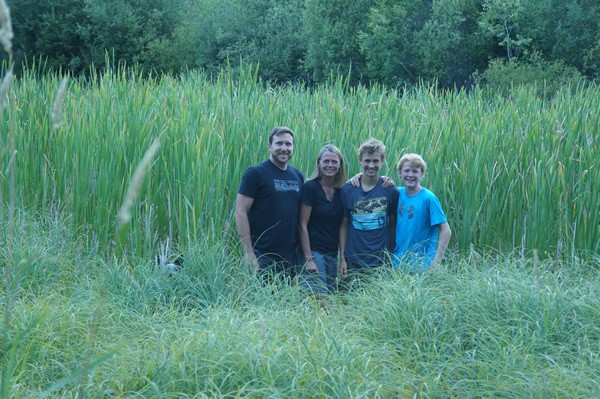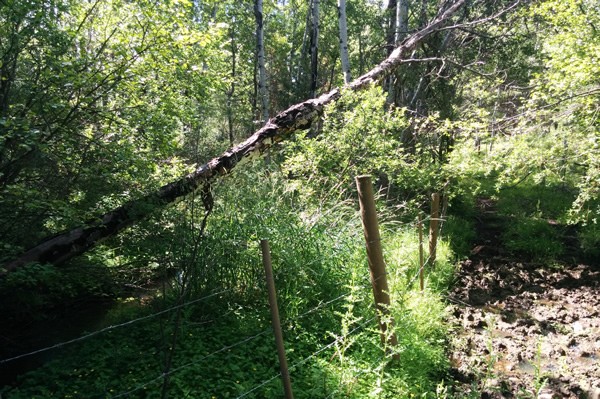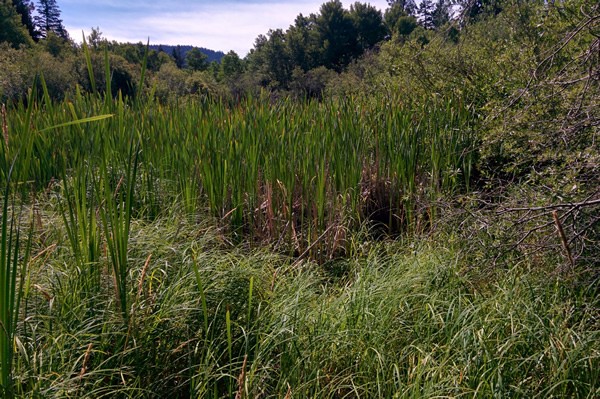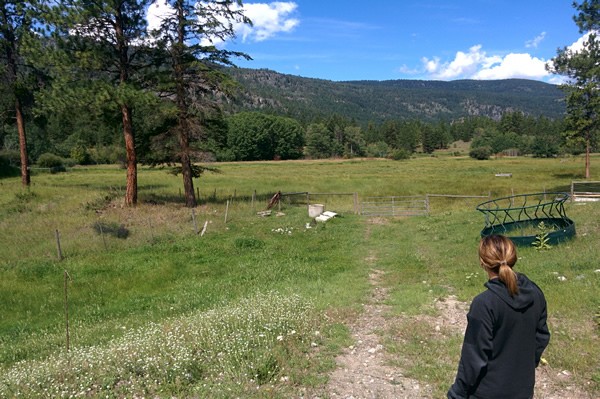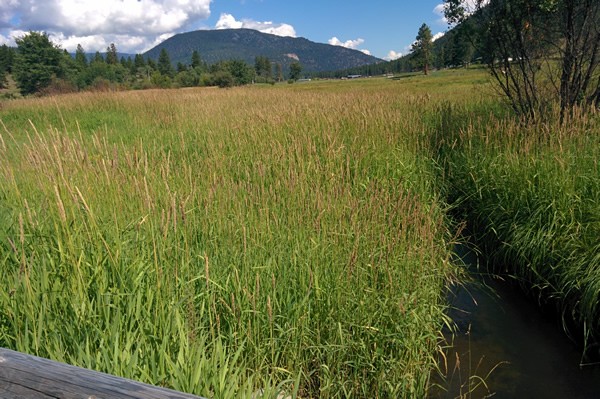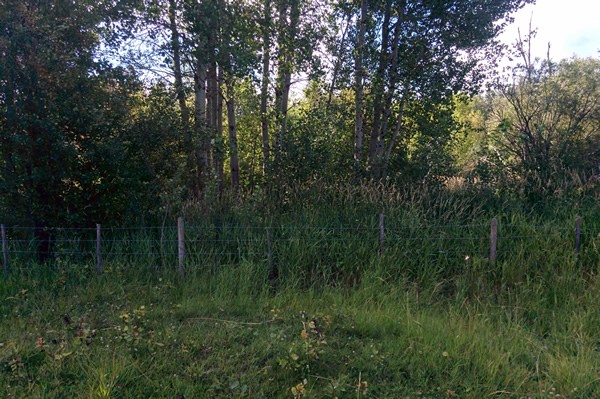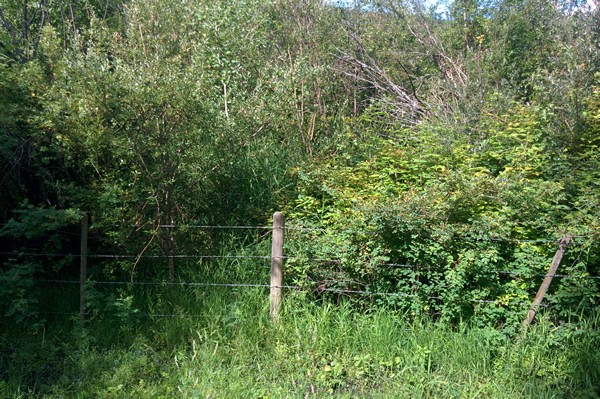Site Description
Name of the site: Darke Creek Ranch
Address: Okanagan | Summerland
Size: 160-170 acres
Type of production: Cow-calf operation (~30 head)
Number of people employed: 2
Owned property 8 years
I expected to see an improvement in the physical state of the area, and I did!”
~Tanya Brouwers
Stewardship Practices Guides
The following guides are relevant to this project site
- Riparian Areas in Settled Landscapes
- Guidance for Restoration Activities in Riparian Areas
- Drainage Maintenance in Agricultural Waterways
Click to download the table for stewardship practices at the Darke Creek Ranch.
Stewardship project partner:
The Environmental Farm Plan and Beneficial Management Practices Program provided partial funding and technical support for the project.
Project Overview:
Tanya Brouwers and her husband, Brad Dearden, bought the property about 8 years ago. Previous owners had leased the land to a cattle operation which had allowed their cattle into the creek and large wetland areas on the property. Tanya and Brad fenced off all the riparian areas with support from the Beneficial Management Practices Program. They also continue to battle invasive plants, such as reed canary grass, that have infested some of the waterways.
Key Stewardship Actions:
- Fenced off riparian areas from horses and cattle
- Removal of invasive species
Champions
Tanya Brouwers, Brad Dearden, and family
Motivation
Tanya and Brad aim to maintain the biodiversity on their land while operating a farm that supports itself financially.
To the best of our ability [we aim to] maintain both biodiversity and a financially feasible farm.
For Tanya and Brad, the fencing project was motivated by a desire to “see an improvement in the physical state of the area” and an increase in vegetation cover.
I expected to see an improvement in the physical state of the area, and I did. That was what I wanted to see. More vegetation, vegetative healing, as it was basically nasty.
Tanya’s aim to increase and maintain the biodiversity on their property is the number one priority.
For me, maintaining biodiversity is extremely important, so that’s an advantage. If I was coming (only) from a financial standpoint, maybe not so much because we really cut off a lot of our grazing. But for us our priority is to maintain this (biodiversity) so that would be the bonus.
Challenges
Tanya and Brad found completing the fencing project straightforward, as they have a lot experience completing similar projects. Although finding the time needed to complete the fencing was difficult as they both work off-farm.
We are used to fencing so that wasn’t really a challenge. It was really the time, because we also work, but other technical issues or anything? No, we’ve done all that.
Tanya and Brad also fought to keep the creek that they had protected from their livestock flowing by preventing an upstream irrigation reservoir from closing completely. Some of the neighbours were not that happy about the situation but the creek now flows.
We really fought to keep the creek that runs through there running. When we first moved here it kept being shut-off because it’s connected to an irrigation reservoir. So we really fought to get our rights so that they couldn’t turn it off entirely.
The removal of canary reed grass in some of their streams proved difficult even with burning. They are still looking for alternative ways to remove the invasive species.
Burning didn’t work, it’s so thick that the native plants can’t grow through ….. We don’t want to use anything toxic. People don’t know what to do. Putting down cardboard and plastic is infeasible for large areas.
Outcomes
Their property and protected riparian areas provide habitat for bears, deer, moose, birds (e.g. screech owls), and “all the riparian plant species you would expect to see”. The area even has a red-list plant community, the water birch – rose community and Tanya says that “if you go through the red listed section of the plant manual, they are in there.” The wetlands are also home to a population of spade foot toads.
The creation of so much protected riparian habitat on their property created a ripple effect and they have managed to create a corridor that stretches from their property onto Crown land.
We created a corridor here, because we started here, and then we made a big stink because just on the other side of the property is Crown range but they aren’t supposed to keep their cattle close to the river. They are supposed to keep them up higher, but since than Ministry of Forests has fenced off that riparian to, so now there is a really long corridor which is really pretty cool, a one after another kind of situation.
The project has also allowed their family to learn more about their property and their son has even used the wetland in a science fair project.
My son used one of the wetlands as a reference for his science fair project and he made it all the way to the nationals in Montreal this year. It’s provided learning for us all.
For agricultural producers looking to do similar projects, Tanya thinks that working with environmental stewardship programs can be beneficial.
I would say go through any of the programs, you can use them all to your advantage. Like the Environmental Farm Plan or the South Okanagan Similkameen Conservation Program some of them even provide labour, which I didn’t know at the time. So go through all the programs, they would have been a lot of help. I would have gone through them knowing now.
Stewardship Practices Menu
Learn more about Species at Risk
Stewardship Practices Case Studies
Fraser Valley & Lower Mainland Sites
Kootenay Sites
Okanagan Sites
Vancouver Island Sites
Contact Information
Find us on social media
LinkedIn: @StewardshipCentreBC YouTube: @stewardshipcentreforbc1047 Instagram: @StewardshipBC

